The Art of Compounding with Content: Maximizing Your Results with Minimal Effort

As a content marketer, you know that creating valuable content is key to generating traffic and leads. However, relying solely on temporal content or content generated from timely topics can limit your reach and impact. That’s where compound marketing comes in. By creating high-quality evergreen content, you can generate long-term results with minimal effort.
In this article, we’ll discuss the power of compound content, how to create it, and how to optimize your strategy for maximum results. Get ready to unlock the potential of compound marketing and take your content game to the next level!
Understanding Compound Content
Creating content that generates traffic and leads consistently over time is a challenge for many marketers. However, compounding with content can help achieve this goal. Compounding is a marketing strategy that involves creating evergreen content that continues to gain traffic organically over time.
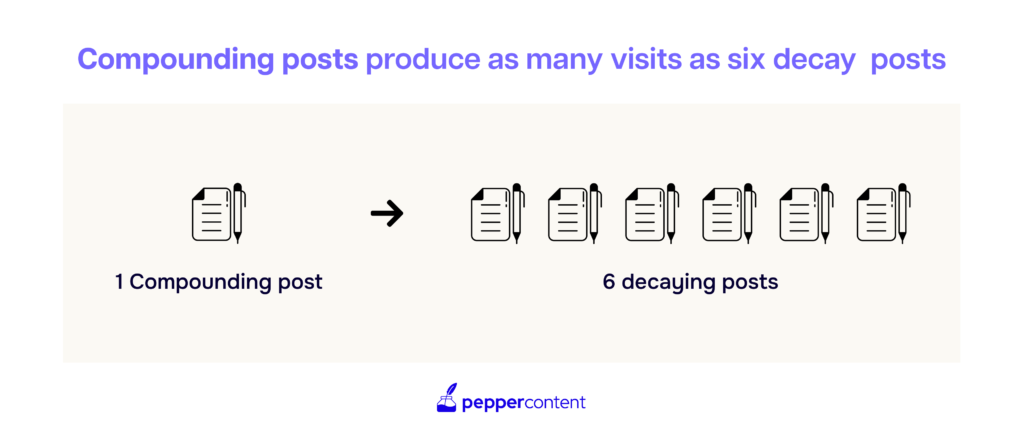
Unlike viral or temporal content, compound content generates traffic consistently over a long period – sometimes years – after it is published. For example, the blog post “The Beginner’s Guide to SEO” by Moz has been generating traffic and backlinks for years after its initial publication.
Compounding depends on the quality of the content. Thus, creating high-quality and informative content is essential when using this strategy. In the next section, we will discuss how to create such content.
Creating High-Quality Content
Creating high-quality, valuable content is the foundation of a successful compound marketing strategy. Your content must be informative, engaging, and shareable to maximize its potential for generating long-term traffic and leads. It’s not just about creating content that will get clicks; it’s about creating content that people will want to come back to time and time again.
To create high-quality content, start by understanding your target audience and what they’re looking for. This means conducting thorough research on their pain points, needs, and interests. Use this information to craft content that provides value to the reader.
Building a keyword universe is not a walk in the park. But what if we tell you that Pepper Content can help you get it done in just under 15 minutes? With Pepper’s Keyword Discovery feature, you can get personalized categories, themes, and keywords for your domain and filter out your existing ranking keywords to get only fresh new opportunities. Check out Pepper’s all-new CMP to learn more.
Next, ensure your content is visually appealing and easy to read. Break up large blocks of text with subheadings, bullet points, and images. Use a conversational tone to keep readers engaged.
One example from the industry is the HubSpot blog. They consistently publish high-quality evergreen content that provides value to their readers. Their articles are well-written, informative, and visually appealing. As a result, they have built a loyal following of readers who regularly return for more.
Investing in high-quality evergreen content pays off long-term because it continues to generate traffic and leads over time without any additional effort on your part. This allows you to focus on other aspects of your business while your content works for you in the background.
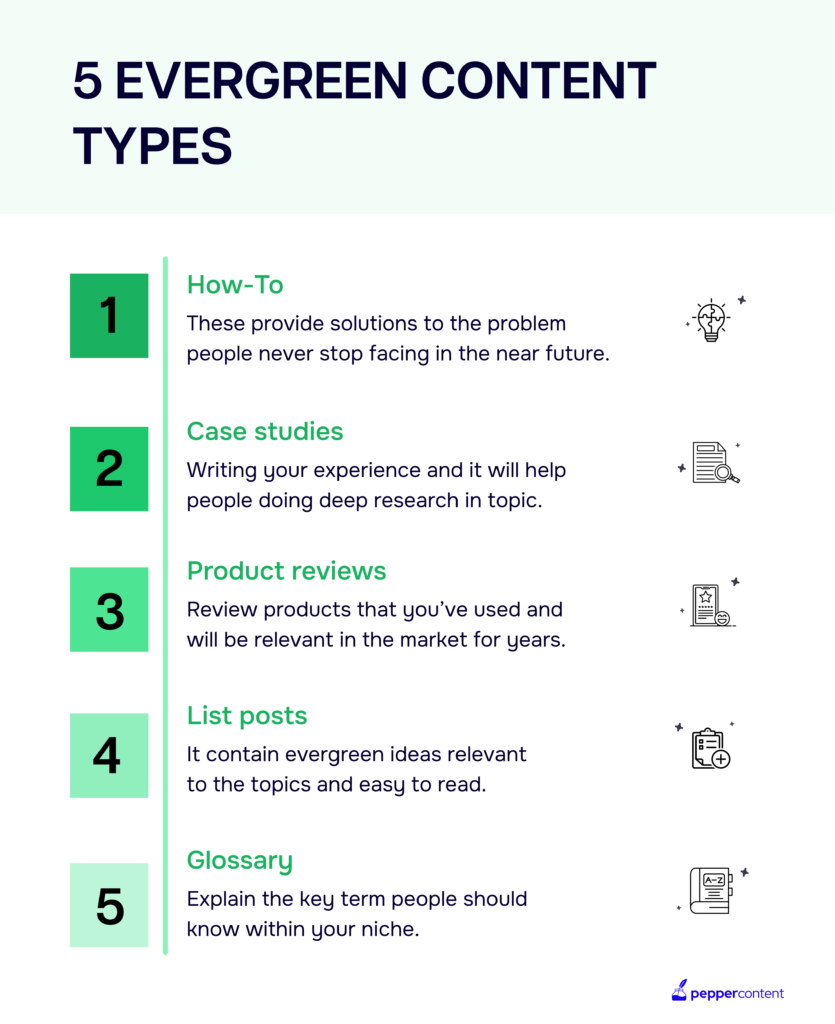
Remember: creating high-quality content takes time and effort upfront but pays dividends in the long run. Focus on providing value to your readers, making your content visually appealing and easy to read, and using a conversational tone that keeps readers engaged.
Leveraging Micro Content & Distribution Platforms
Creating compound content is just the beginning of your content marketing journey. To maximize its impact, you need to leverage micro-content and distribution platforms effectively. Micro-content refers to smaller pieces of content that are derived from a larger, evergreen piece of compound content. These could be social media posts, blog excerpts, videos, audio clips, infographics, or images.
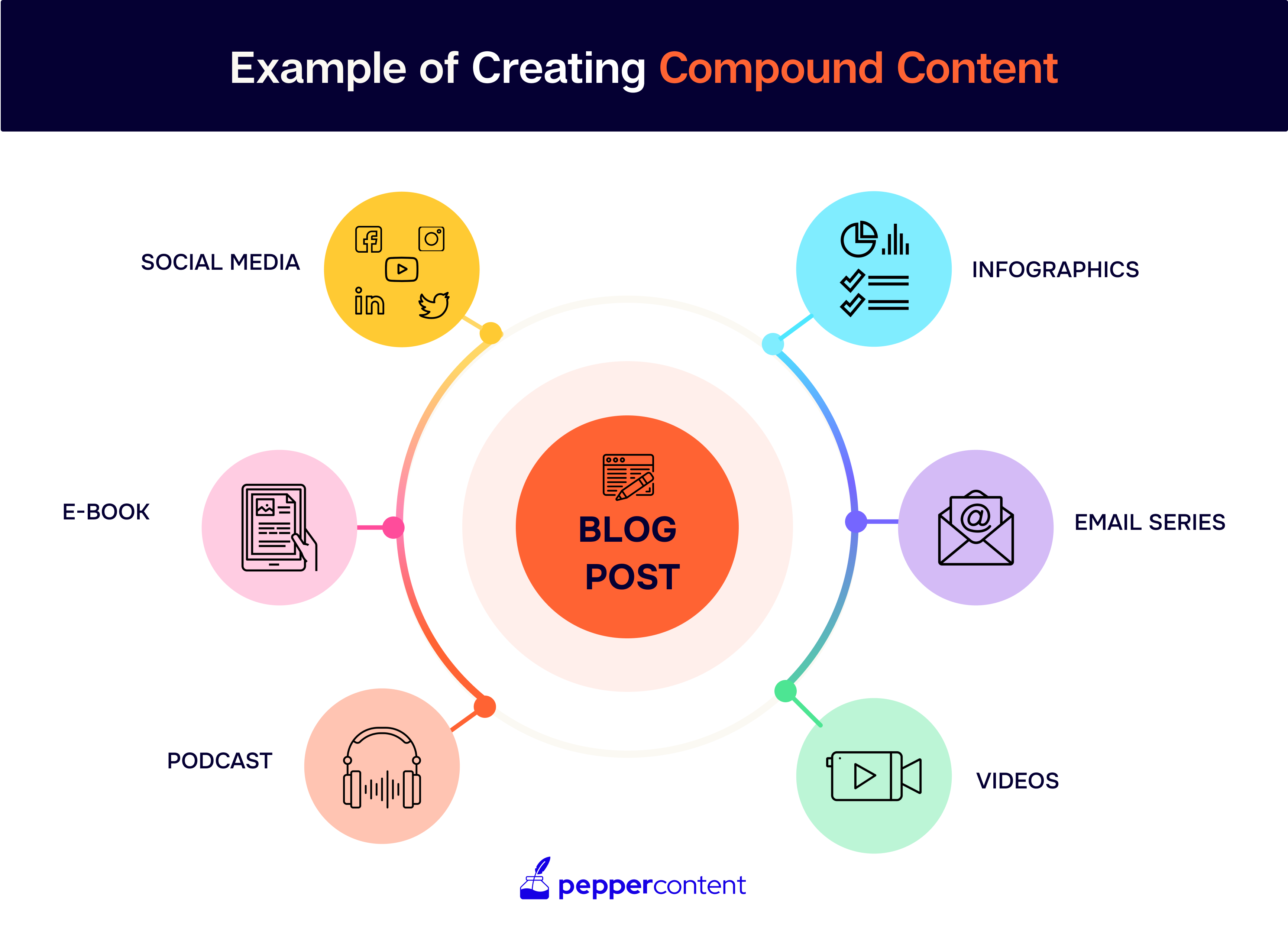
Ideally, micro-content should be created alongside the primary compound content since it saves time and effort. That said, creating fresh micro-content every once in a while helps keep your audience engaged with your brand and reinforces your brand’s authority in your industry. Here are some ways you can leverage micro-content:
- Social media: Share bite-sized snippets of your compound content on social media platforms like Facebook, Twitter, LinkedIn, and Instagram to attract more traffic to your website.
- Email marketing: Repurpose excerpts from your compound content into email newsletters to keep subscribers informed and engaged.
Videos: Create short videos or animated clips based on your evergreen content that can be shared on YouTube or other video-sharing platforms.
Podcasts: Use the audio from your compound content to create podcasts for audiences who prefer audio formats.
By repurposing existing pieces of content into micro-content and sharing them across multiple distribution channels, you can drive more traffic to your website through various sources.
Some businesses have effectively leveraged distribution platforms like Outbrain or Taboola to amplify their evergreen content’s reach. For example, HubSpot has managed to generate over 1 million monthly visitors by promoting its high-quality evergreen blog content through paid channels.
In conclusion, micro-content is a critical element of any compound content marketing strategy. By repurposing your existing content into bite-sized pieces and sharing them on various distribution channels, you can drive more traffic to your website, engage with your audience, and establish your brand’s authority in your industry.
Optimizing Your Strategy with Analytics & SEO
To make the most of your compound content strategy, it’s crucial to track your results and analyze your data regularly. This helps you understand which pieces are performing well and where there is room for improvement.
Measuring your success can be done through various methods, such as tracking website traffic and engagement rates. Google Analytics is a popular tool that allows you to monitor important metrics such as time spent on site, bounce rate, and conversion rate. By keeping an eye on these numbers, you can make informed decisions about what content to create and how to distribute it.
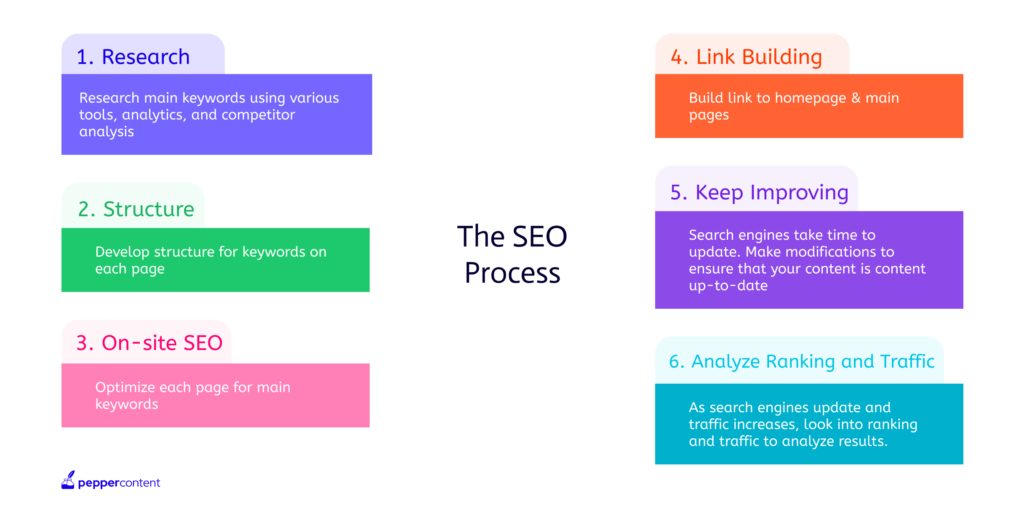
SEO is another crucial aspect of successful compound marketing. Conducting keyword research ensures that your content is optimized for search engines, making it easier for potential customers to find. By using relevant keywords in titles, headers, and throughout your content, you increase your chances of ranking higher in search engine results pages.
By implementing analytics and SEO into your compound content strategy, you can optimize it for better results over time.
Now, you have learned the art of compounding with content to create a winning content marketing strategy. By now, you know how to create high-quality, evergreen content that generates long-term traffic and leads without putting in too much effort. Remember, compounding is all about creating content that continues to provide value for years to come. By leveraging micro-content, distribution platforms, analytics, and SEO, you can take your content marketing game to the next level.
So go ahead, experiment with different types of micro-content and platforms to find what works best for your brand, and see the results for yourself! And if you need any help or guidance along the way on content creation, don’t hesitate to get in touch with us at Pepper Content!
FAQs
1. What types of content work best for compounding?
Evergreen content that provides value over time works best for compounding. This includes how-to guides, tutorials, product reviews, and industry insights.
2. How can I repurpose my existing content into micro-content?
You can repurpose your existing content into micro-content by creating social media posts, blog excerpts, videos, audio clips, infographics, and more. By doing this, you can reach a wider audience and get more mileage out of your evergreen content.
3. Can I still create temporal or viral content alongside compound content?
Yes! It’s important to have a mix of both temporal/viral and evergreen/compound content in your strategy. This allows you to take advantage of trending topics while still generating long-term traffic and leads.
4. How do I track my results and measure success?
You can track your results by analyzing website traffic, engagement rates, click-through rates, and conversions. By using analytics tools like Google Analytics or SEMrush, you can see which pieces of content are driving the most traffic and adjust your strategy accordingly.
5. How long does it take to see results from compound content marketing?
Compounding takes time – it’s not an overnight success story. However, if done correctly, you should start seeing incremental traffic growth and leads within 6-12 months. Remember: patience is key!
Latest Blogs
In this blog, explore the golden rules of using AI marketing tools so you can leverage the benefits to their maximum potential.
In this blog, you’ll learn how to avoid the pitfalls of SEO over-optimization while enhancing your site’s performance.
In this article, we’ll take a look at what AMP is, its advantages and disadvantages, and how it affects SEO.
Get your hands on the latest news!
Similar Posts

Content Strategy
8 mins read
Connect Deeper, Sell Smarter: 7 UGC Campaigns That Transformed Brand-Customer Relationships

Content Strategy
8 mins read
5 Ways to Use Long-form Content in Digital Marketing
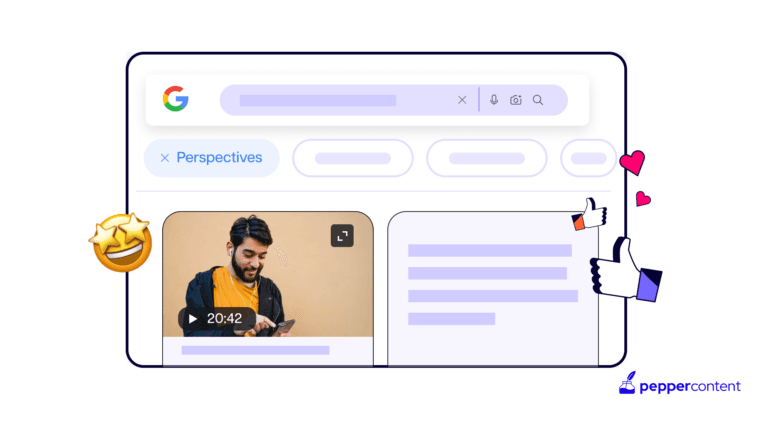
Content Strategy
8 mins read